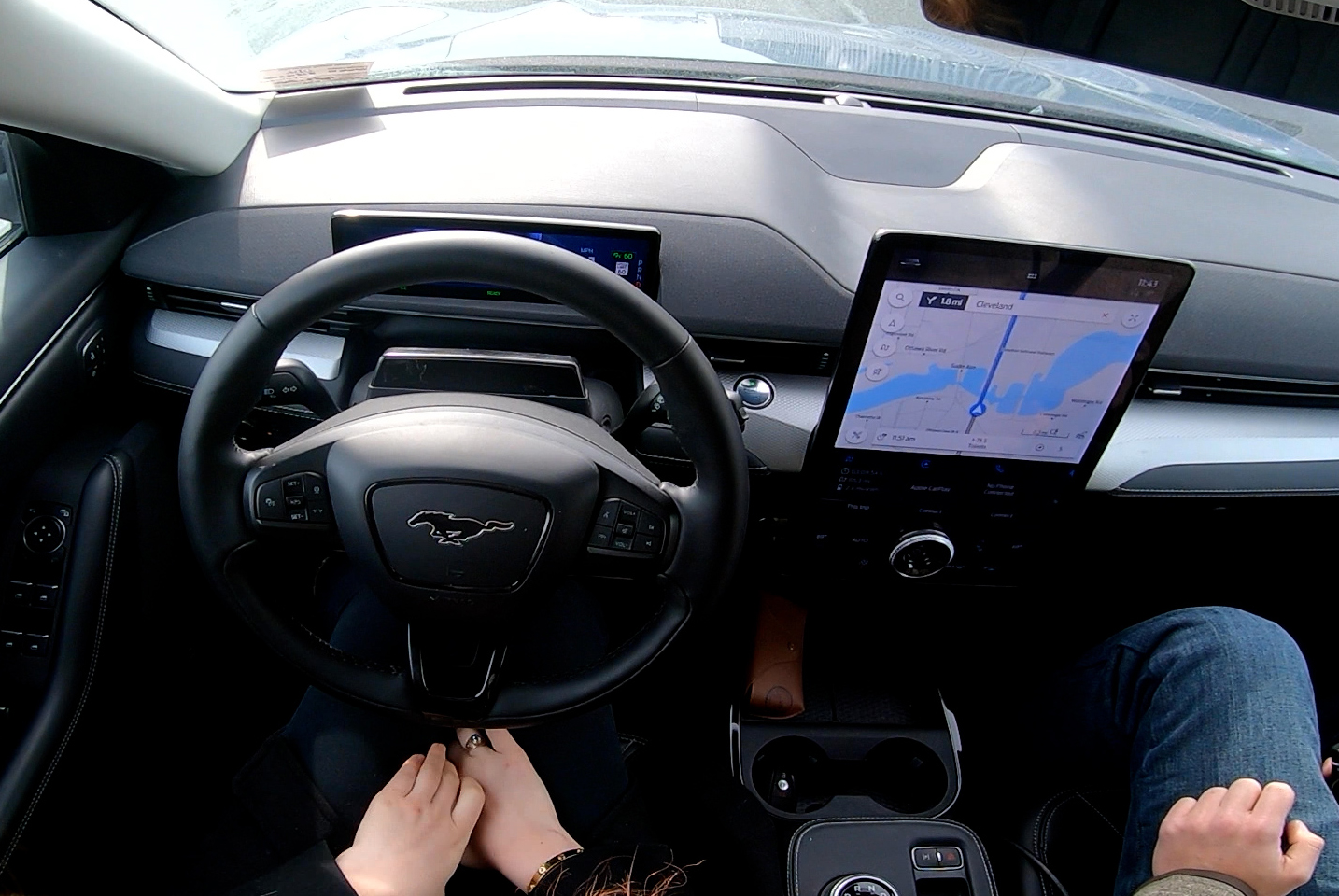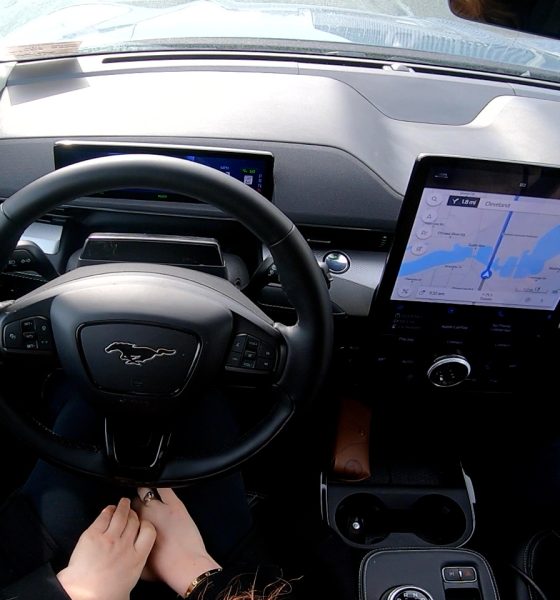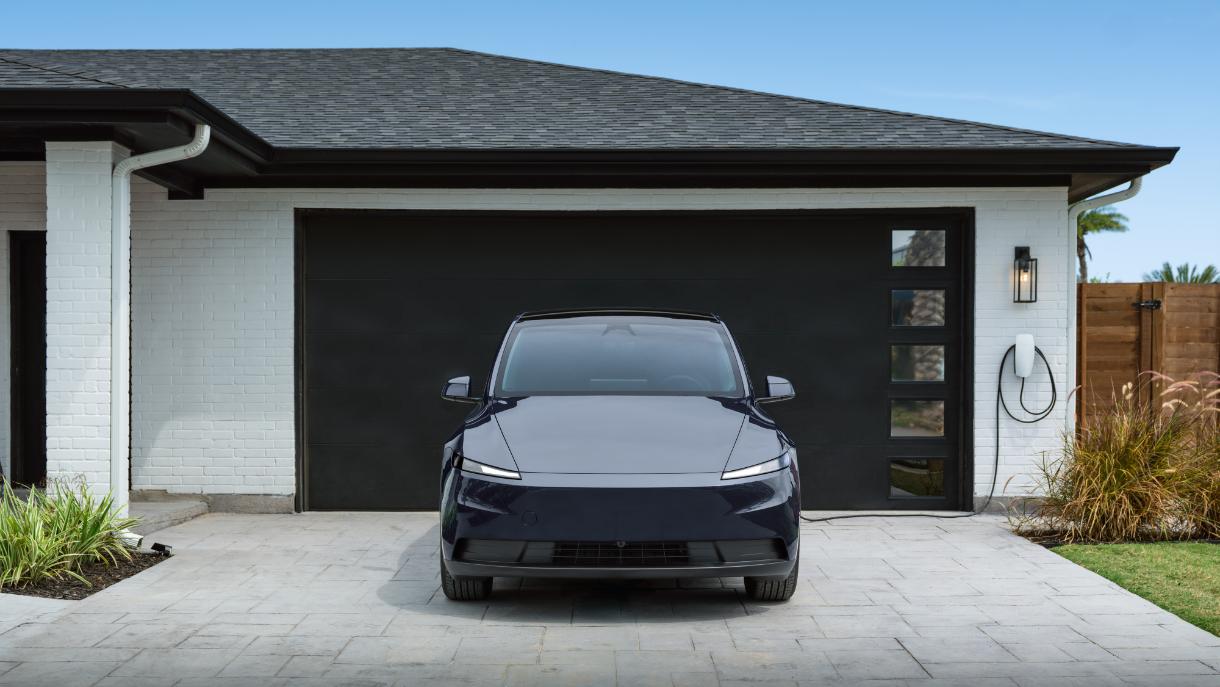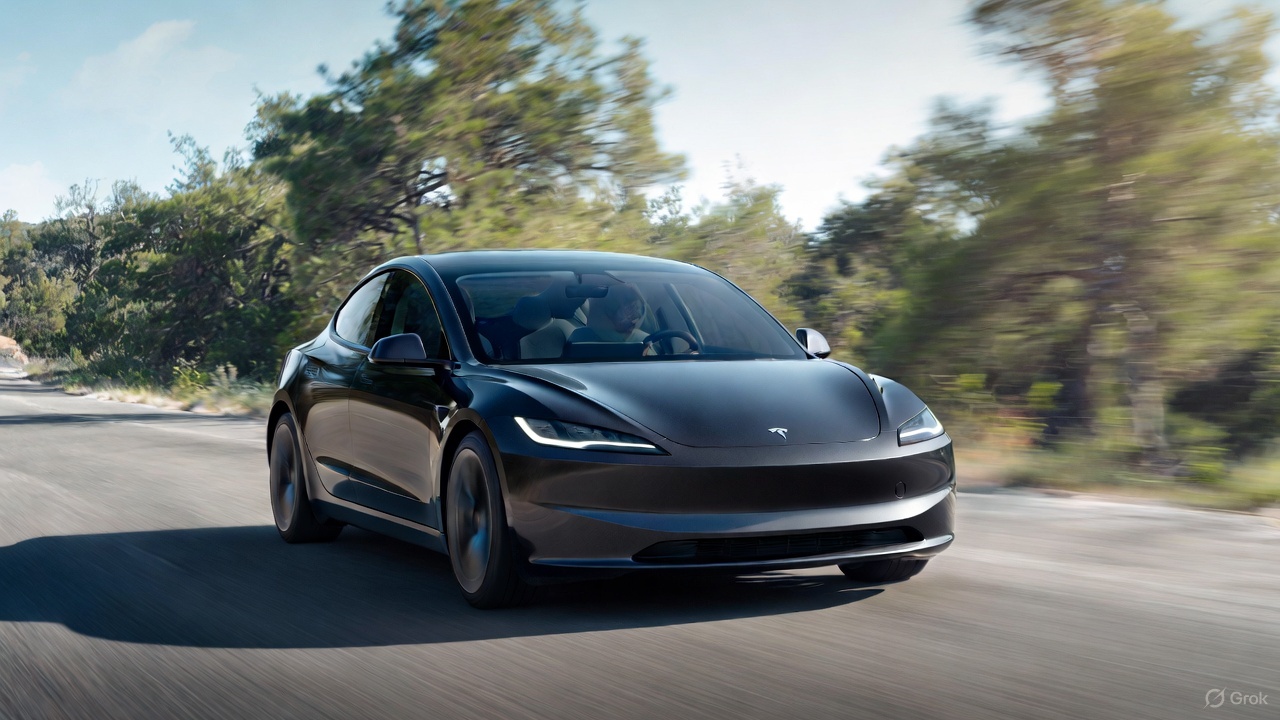

News
Ford shows BlueCruise hands-free driving while CEO Farley takes jab at Tesla
Ford released a new video of its BlueCruise hands-free driving system earlier today. It didn’t come with a straightforward approach, either as the company’s CEO, Jim Farley, took a jab at Tesla in a Tweet that highlighted the new driver assistance feature.
Ford’s BlueCruise is the legacy automaker’s crack at a semi-autonomous driving functionality that aims to increase driver safety on the roads. Tested over a fleet of Ford vehicles that include the Ford F-150 pickup and the Mustang Mach-E, Ford employees accumulated over 100,000 miles of travel while using BlueCruise. Compared to other semi-autonomous driving features currently available on the market, Tesla Autopilot has been used for an estimated 22.5 billion, yes billion, miles of driving through its testing. This has been accumulated through the use of Tesla’s owners to improve the Autopilot and Full Self-Driving suites’ performance that the automaker offers to customers. Basic Autopilot is included with all Tesla vehicles, while Full Self-Driving currently costs $10,000.
To test BlueCruise’s capabilities while traveling on the road, Ford performed the Mother of All Road Trips, or MOART, as it referred to the testing phase. It wasn’t a matter of testing the features on clean, dry roads, either. Ford drivers inevitably hit severe weather during the massive trek across some of the United States’ most popular highways and interstates, ensuring its confidence while traveling through some of the more challenging terrains and road conditions that can provide some motor vehicle operators with headaches.
The reason Ford chose to have its employees operate the testing scenario instead of its real-world owners is unknown. However, criticisms of Tesla’s use of its owners to test the Full Self-Driving Beta seems to be the subject of Ford CEO Jim Farley, who tweeted that “We [Ford] tested it in the real world, so our customers don’t have to.”
BlueCruise! We tested it in the real world, so our customers don’t have to. pic.twitter.com/dgqVkWH31r
— Jim Farley (@jimfarley98) April 14, 2021
Recently, the National Transportation Safety Board (NTSB) stated that Tesla’s use of its real-world owners to test its FSD Beta was a “potential risk to motorists and other road users,” according to a note written by NTSB chief Robert Sumwalt, according to CNBC. However, drivers have essentially pleaded as to why they should be included in the testing phase. Tesla owners are never required to utilize Autopilot or the FSD Beta if they do not want to. Owners have called for an expansion of Tesla’s Beta program in several cases, and it has led to CEO Elon Musk nearly doubling the size of the testing group. Tesla has also removed owners from the FSD Beta testing sequence if they did not utilize it properly.
Ford’s BlueCruise will vary depending on the vehicle that is being driven. It will cost $1,595 in the F-150 pickup and $3,200 in the Mach-E, Fox Autos said. It will require a three-year, $600 subscription to connected service in the all-electric Mach-E and will be updated through Over-the-Air software updates.

News
SpaceX shades airline for seeking contract with Amazon’s Starlink rival

SpaceX employees, including its CEO Elon Musk, shaded American Airlines on social media this past weekend due to the company’s reported talks with Amazon’s Starlink rival, Leo.
Starlink has been adopted by several airlines, including United Airlines, Qatar Airways, Hawaiian Airlines, WestJet, Air France, airBaltic, and others. It has gained notoriety as an extremely solid, dependable, and reliable option for airline travel, as traditional options frequently cause users to lose connection to the internet.
Many airlines have made the switch, while others continue to mull the options available to them. American Airlines is one of them.
A report from Bloomberg indicates the airline is thinking of going with a Starlink rival owned by Amazon, called Leo. It was previously referred to as Project Kuiper.
American CEO Robert Isom said (via Bloomberg):
“While there’s Starlink, there are other low-Earth-orbit satellite opportunities that we can look at. We’re making sure that American is going to have what our customers need.”
Isom also said American has been in touch with Amazon about installing Leo on its aircraft, but he would not reveal the status of any discussions with the company.
The report caught the attention of Michael Nicolls, the Vice President of Starlink Engineering at SpaceX, who said:
“Only fly on airlines with good connectivity… and only one source of good connectivity at the moment…”
CEO Elon Musk replied to Nicolls by stating that American Airlines risks losing “a lot of customers if their connectivity solution fails.”
American Airlines will lose a lot of customers if their connectivity solution fails
— Elon Musk (@elonmusk) December 14, 2025
There are over 8,000 Starlink satellites in orbit currently, offering internet coverage in over 150 countries and territories globally. SpaceX expands its array of satellites nearly every week with launches from California and Florida, aiming to offer internet access to everyone across the globe.
Currently, the company is focusing on expanding into new markets, such as Africa and Asia.
News
Tesla Model Y Standard stuns in new range test, besting its Premium siblings
Tesla’s newer vehicles have continued to meet or exceed their EPA estimates. This is a drastic change, as every 2018-2023 model year Tesla that Edmunds assessed did not meet its range estimates.

The Tesla Model Y Standard stunned in a new range test performed by automotive media outlet Edmunds, besting all of its Premium siblings that are more expensive and more luxurious in terms of features.
Testing showed the Model Y Standard exceeded its EPA-estimated range rating of 321 miles, as Edmunds said it is the “longest-range Model Y that we’ve ever put on our loop.” In the past, some vehicles have come up short in comparison with EPA ranges; for example, the Model Y’s previous generation vehicle had an EPA-estimated range of 330 miles, but only drove 310.
Additionally, the Launch Series Model Y, the first configuration to be built in the “Juniper” program, landed perfectly on the EPA’s range estimates at 327 miles.
It was also more efficient than Premium offerings, as it utilized just 22.8 kWh to go 100 miles. The Launch Series used 26.8 kWh to travel the same distance.
It is tested using Edmunds’ traditional EV range testing procedure, which follows a strict route of 60 percent city and 40 percent highway driving. The average speed throughout the trip is 40 MPH, and the car is required to stay within 5 MPH of all posted speed limits.
Each car is also put in its most efficient drive setting, and the climate is kept on auto at 72 degrees.
“All of this most accurately represents the real-world driving that owners do day to day,” the publication says.
With this procedure, testing is as consistent as it can get. Of course, there are other factors, like temperature and traffic density. However, one thing is important to note: Tesla’s newer vehicles have continued to meet or exceed their EPA estimates. This is a drastic change, as every 2018-2023 model year Tesla that Edmunds assessed did not meet its range estimates.
Tesla Model Y Standard vs. Tesla Model Y Premium
Tesla’s two Model Y levels both offer a great option for whichever fits your budget. However, when you sit in both cars, you will notice distinct differences between them.
The Premium definitely has a more luxurious feel, while the Standard is stripped of many of the more premium features, like Vegan Leather Interior, acoustic-lined glass, and a better sound system.
You can read our full review of the Model Y Standard below:
Tesla Model Y Standard Full Review: Is it worth the lower price?
News
Xpeng CEO: Tesla FSD 14.2 has developed “near-Level 4” performance
While acknowledging that imperfections remain, the Xpeng CEO said FSD’s current iteration significantly surpasses last year’s capabilities.

Xpeng CEO He Xiaopeng has offered fresh praise for Tesla’s Full Self-Driving (FSD) system after revisiting Silicon Valley more than a year after his first hands-on experience.
Following extended test drives of Tesla vehicles running the latest FSD software, He stated that the system has made major strides, reinforcing his view that Tesla’s approach to autonomy is indeed the proper path towards autonomy.
Tesla FSD closing in on Level 4 driving
During his visit, He test-drove a Tesla equipped with FSD V14.2. He also rode in a Tesla Robotaxi. Over roughly five hours of driving across Silicon Valley and San Francisco, He said both vehicles delivered consistent and reassuring performance, a notable improvement from his experience a year earlier.
According to He, Tesla’s FSD has evolved from a smooth Level 2 advanced driver assistance system into what he described as a “near-Level 4” experience in terms of capabilities. While acknowledging that imperfections remain, the Xpeng CEO said FSD’s current iteration significantly surpasses last year’s capabilities. He also reiterated his belief that Tesla’s strategy of using the same autonomous software and hardware architecture across private vehicles and robotaxis is the right long-term approach, allowing users to bypass intermediate autonomy stages and move closer to Level 4 functionality.
He previously tested Tesla’s FSD V12.3.6 and Waymo vehicles in California in mid-2024, noting at the time that Waymo performed better in dense urban environments like San Francisco, while Tesla excelled in Silicon Valley and on highways.
Xpeng’s ambitious autonomy roadmap and internal challenge
The Silicon Valley visit also served as a benchmark for Xpeng’s own autonomy ambitions. He stated that Xpeng is looking to improve its VLA autonomous driving system to match the performance of Tesla’s FSD V14.2 within China by August 30, 2026. Xpeng is poised to release its VLA 2.0 smart driving software next quarter, though He cautioned that the initial version will not be able to match FSD V14.2’s capabilities, as noted in a CNEV Post report.
He also added a personal twist to the goal, publicly challenging Xpeng’s autonomous driving team. If the performance target is met by the 2026 deadline, the CEO stated that he will approve the creation of a Chinese-style cafeteria for Xpeng’s Silicon Valley team. If not, Liu Xianming, head of Xpeng’s autonomous driving unit, has pledged to run naked across the Golden Gate Bridge, He noted.








